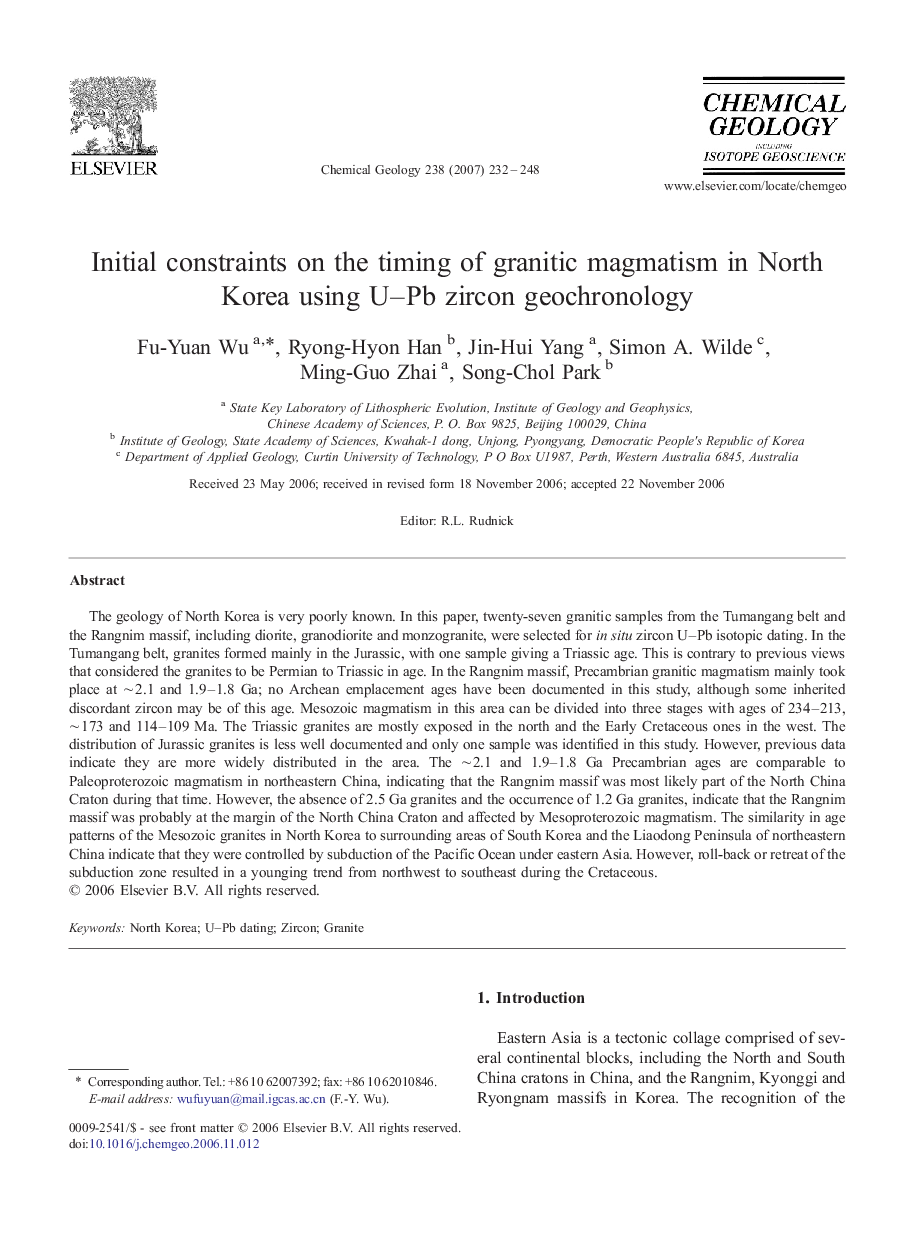| کد مقاله | کد نشریه | سال انتشار | مقاله انگلیسی | نسخه تمام متن |
|---|---|---|---|---|
| 4701028 | 1637753 | 2007 | 17 صفحه PDF | دانلود رایگان |

The geology of North Korea is very poorly known. In this paper, twenty-seven granitic samples from the Tumangang belt and the Rangnim massif, including diorite, granodiorite and monzogranite, were selected for in situ zircon U–Pb isotopic dating. In the Tumangang belt, granites formed mainly in the Jurassic, with one sample giving a Triassic age. This is contrary to previous views that considered the granites to be Permian to Triassic in age. In the Rangnim massif, Precambrian granitic magmatism mainly took place at ∼ 2.1 and 1.9–1.8 Ga; no Archean emplacement ages have been documented in this study, although some inherited discordant zircon may be of this age. Mesozoic magmatism in this area can be divided into three stages with ages of 234–213, ∼ 173 and 114–109 Ma. The Triassic granites are mostly exposed in the north and the Early Cretaceous ones in the west. The distribution of Jurassic granites is less well documented and only one sample was identified in this study. However, previous data indicate they are more widely distributed in the area. The ∼ 2.1 and 1.9–1.8 Ga Precambrian ages are comparable to Paleoproterozoic magmatism in northeastern China, indicating that the Rangnim massif was most likely part of the North China Craton during that time. However, the absence of 2.5 Ga granites and the occurrence of 1.2 Ga granites, indicate that the Rangnim massif was probably at the margin of the North China Craton and affected by Mesoproterozoic magmatism. The similarity in age patterns of the Mesozoic granites in North Korea to surrounding areas of South Korea and the Liaodong Peninsula of northeastern China indicate that they were controlled by subduction of the Pacific Ocean under eastern Asia. However, roll-back or retreat of the subduction zone resulted in a younging trend from northwest to southeast during the Cretaceous.
Journal: Chemical Geology - Volume 238, Issues 3–4, 30 March 2007, Pages 232–248